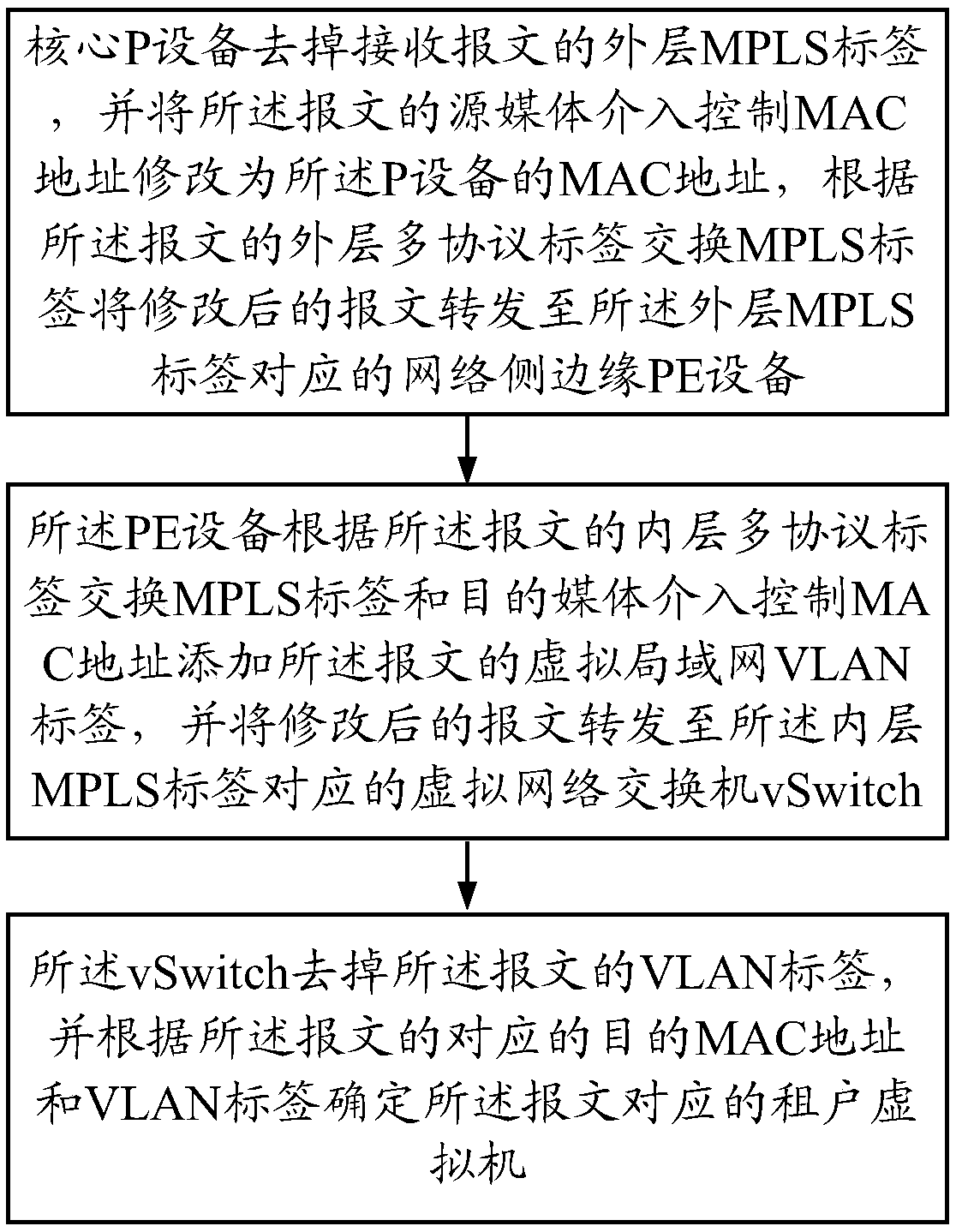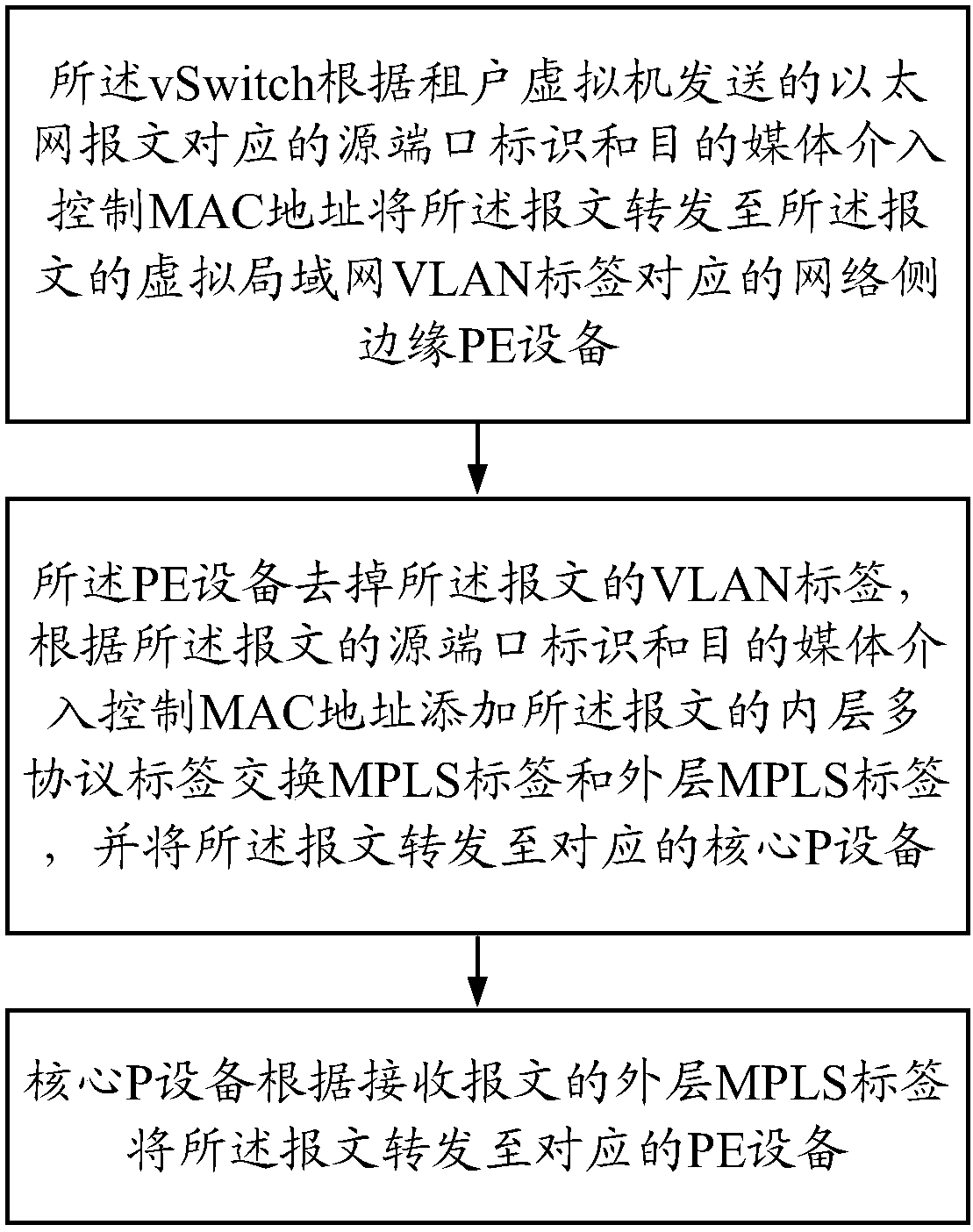Software-defined network-based virtual network control method and device
A virtual network control and software-defined network technology, applied in the field of virtual network, can solve the problems of data center configuration complexity, loss, and network configuration can not be fully automated, and achieve the effect of huge scale, high performance and stability
- Summary
- Abstract
- Description
- Claims
- Application Information
AI Technical Summary
Problems solved by technology
Method used
Image
Examples
Embodiment 1
[0106] Such as Figure 4 As shown, the data center network in this embodiment takes a three-layer network as an example. The middle two layers are full mesh-connected networks that can provide non-blocking forwarding, and the access layer devices are dual uplinked to the middle aggregation layer network. For example, the topology of a layer of P devices is also supported.
[0107] The P device can use a 32*40G DC (data center) Core, and the PE device can use a 48*10G+4*40G TOR. This topology uses 48 DC Cores and 128 TORs to provide a maximum of 3:1 convergence. 6144 10GE access ports are connected to the x86 server below, and a vswitch runs on the server for forwarding. In this topology scale, according to the server configuration of 24 cores and 128G memory, it can roughly provide services for about 100,000 virtual machines.
[0108] In this system, the upper two-layer switch acts as a P device and uses the outer label (Tunnel label) of mpls to forward, and each P and PE dev...
Embodiment 2
[0114] P equipment processing flow
[0115] 1. Message processing flow between P devices
[0116] The packet received by the P device is an mpls packet with a double-layer label. The destination mac of the packet plus the default vid (vlan id) of the port is searched and then forwarded by mpls. Match the outer tunnel label to find the egress and modify the front of the label The source mac is the system mac of the P device, the destination mac and tag are not modified, and the modified message is sent from the egress in the form of untag. If SourcePort is 0, it means that the source port does not need to be matched.
[0117] The corresponding openflow flow table matches and actions are:
[0118] Match: DMac+SourcePort+Tunnel Label(mpls tag)
[0119] Action: DestPort+Set SMac
[0120] The corresponding openflow interfaces can be deduced from the message processing flow, and will not be described in detail.
[0121] 2. The message processing flow sent by the P device to the...
Embodiment 3
[0124] PE device Layer 2 packet processing flow
[0125] 1. L2 (Layer 2 message) ingress (uplink, incoming PE device) message processing flow
[0126] The packet received by the PE device is an Ethernet packet with a VDid (virtual device id, vlan id, which distinguishes the vrouter and vbridge devices in the virtual network), and the PE device assigns an SVp to the packet according to the SourcePort and VDid and obtains the VFI According to DMac+VFI, look up the mac entry to get the two-layer label that needs to be added to the message (the Tunnel Label is the Label representing the destination PE, and the inner label is the inner Label representing the tenant) and egress, the destination mac of the second-layer header before the label It is the unified mpls layer 2 header mac, the source mac is the system mac of the device, the EtherType is mpls type 0x8847, and the modified message is sent from the egress in untag format.
[0127] 2. L2egress message processing flow
[012...
PUM
 Login to View More
Login to View More Abstract
Description
Claims
Application Information
 Login to View More
Login to View More - R&D
- Intellectual Property
- Life Sciences
- Materials
- Tech Scout
- Unparalleled Data Quality
- Higher Quality Content
- 60% Fewer Hallucinations
Browse by: Latest US Patents, China's latest patents, Technical Efficacy Thesaurus, Application Domain, Technology Topic, Popular Technical Reports.
© 2025 PatSnap. All rights reserved.Legal|Privacy policy|Modern Slavery Act Transparency Statement|Sitemap|About US| Contact US: help@patsnap.com



